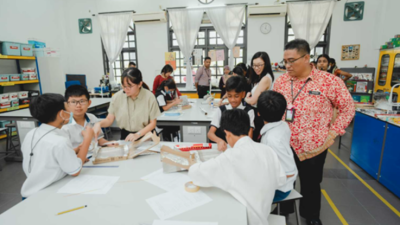By Professor Dr Moy Foong Ming / Datuk Professor Dr Awg Bulgiba Awg Mahmud
COVID-19 is an infection caused by the coronavirus and patients present with signs of respiratory symptoms, fever, cough, shortness of breath and breathing difficulties. In more severe cases, the infection can cause pneumonia, severe acute respiratory syndrome, kidney failure and death. The coronavirus is spread mainly through person-to-person contact. People who are in close contact (within two meters of one another) are most likely to spread it. It spreads through respiratory droplets that are produced when an infected person coughs or sneezes. These droplets can land in the mouths or noses of anyone nearby and may be inhaled into the lungs, which can spread the disease. While it is believed that patients with symptoms are most likely to spread coronavirus, it is thought that some may spread it before they begin to show symptoms.
Standard recommendations to prevent the spread of COVID-19 infection include regular hand washing, covering mouth and nose when coughing and sneezing, avoid close contact with anyone showing symptoms of respiratory illness such as coughing and sneezing. In addition, community mitigation activities such as social distancing is warranted when there are hundreds or thousands of cases growing in the population. The COVID-19 outbreak has been declared a pandemic and the number of cases in our country is increasing very quickly. Containment in making sure all the cases are identified, controlled, and isolated may not be adequate in the current situation.
Social distancing is an infection control measure to reduce transmission from infected people to susceptible individuals by increasing the physical distance between people or reducing frequency of congregation in socially dense community settings, such as schools, universities or workplaces. Social distancing may be the most effective way for people who are not infected with coronavirus to avoid getting it. However, it may lead to closure of schools necessitating the usage of different modes of teaching in colleges and universities; changes in workplace practices i.e. increased use of telecommuting and remote-meeting options, staggered work hours, and spacing workers further apart. Cancellation of mass gathering / social events are also some of the social distancing measures.
The recent mass gathering in the Masjid Jamek in Seri Petaling has contributed 40 and 41 new cases to the statistics on 13 and 14 March 2020, respectively. An analysis of the 1918 flu pandemic (the Spanish flu) showed cities that implemented efforts to reduce contact between people early had significantly lower death rates compared to cities that adopted similar policies later, a measure known as social distancing.
Tertiary educational institutions such as colleges and universities are one of the settings that should apply social distancing. In 2017, there were 538,555 students enrolled in Malaysian public universities with each university having between 5,000 to 30,000 students respectively. These students attend lectures in crowded lecture halls which predispose them to the transmission of COVID-19. As an alternative to face to face teaching, e-learning or distance learning are among the choices.
E-learning is not a new idea and in fact many universities around the world implement e-learning on a large scale through something called Massive Open Online Courses (MOOCs). Fast wireless Internet access like 4G or 5G has enabled e-learning to be conducted on many types of mobile devices like laptops, smartphones, tablets, phablets making e-learning implementable just about anywhere with a good Internet connection. Almost all learning can be conducted through e-learning except for hands-on teaching involving mechanical manipulation, machinery, chemical and biological specimens although virtual reality with haptic feedback could emulate mechanical manipulation to a certain extent. Even clinical teaching can be conducted through e-learning to a certain extent although clinical examination and treatment might be challenging to perform via e-learning.
We look at the implementation of e-learning during the COVID-19 outbreak not only as a means of social distancing but as an opportunity to accelerate the usage of a technology which is perhaps a game-changer for students going through the Fourth Industrial Revolution.
(Professor Dr Moy Foong Ming is Professor in Epidemiology, and Datuk Professor Dr Awg Bulgiba Awg Mahmud is Public Health Medicine Physician & Professor in Epidemiology, Department of Social and Preventive Medicine, Faculty of Medicine, Universiti Malaya.)
ADVERTISEMENT
ADVERTISEMENT


































